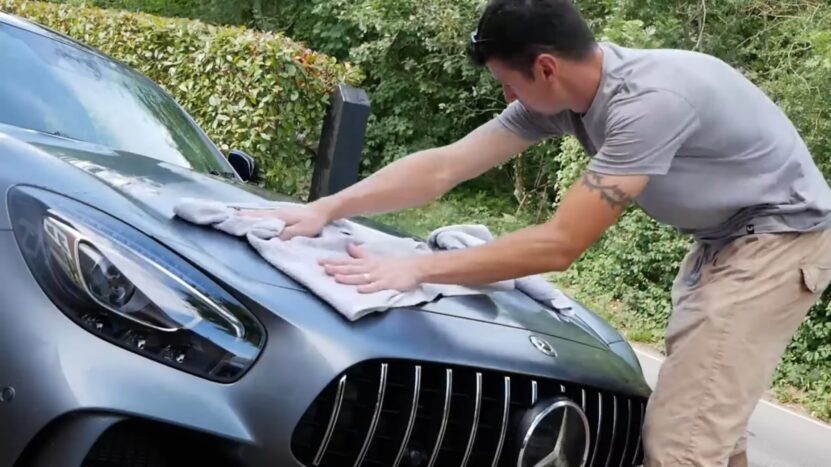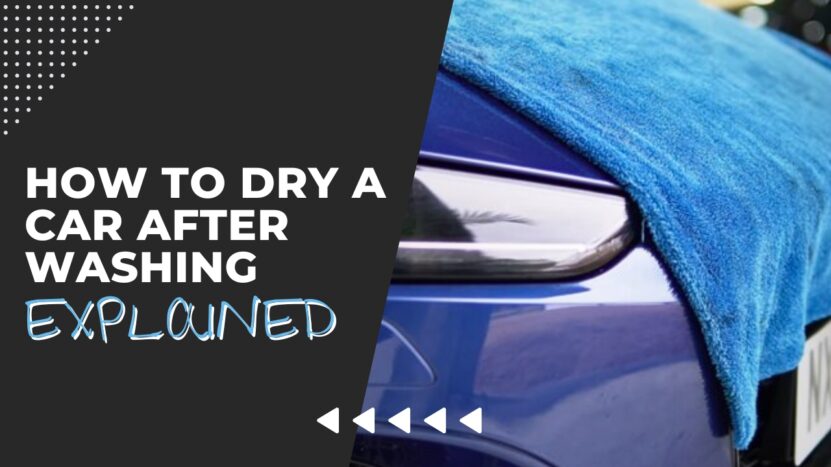Few things are more satisfying than admiring your car after it’s been freshly washed and dried, its paintwork gleaming like new. However, many car owners are unaware of the importance of properly drying their vehicles after a wash. If done incorrectly, water spots, streaks, and even scratches can mar your vehicle’s beautiful finish.
Fear not, fellow car enthusiasts! In this comprehensive guide, we’ll reveal the best methods for drying your car after a wash. Whether you’re a seasoned professional or a weekend warrior, these tips will help you achieve a flawless, spotless shine every time. So, buckle up, and let’s get started!
Importance of Proper Car Drying

Properly drying your car after a wash is essential to maintaining the quality of your vehicle’s paintwork. If left to air dry, the minerals in the water can leave unsightly spots and streaks. Additionally, using improper techniques or materials to dry your car can lead to scratches and swirl marks on the surface. By employing the right methods and tools, you can ensure a streak-free, scratch-free finish that will make your car look stunning.
The Tools of the Trade
Before we delve into the best methods for drying your car, it’s essential to familiarize yourself with the tools you’ll need. Here are some of the most commonly used car-drying tools and their unique benefits:
Microfiber Towels
Microfiber towels are the gold standard for drying your car. They are soft, super-absorbent, and non-abrasive, making them perfect for protecting your car’s delicate paintwork. When shopping for microfiber towels, opt for those with a high GSM (grams per square meter) rating, which indicates a thicker and more absorbent towel.
Chamois
Chamois, either natural or synthetic, is another popular choice for drying cars. These soft, absorbent cloths are excellent for soaking up water without leaving streaks or lint behind. Natural chamois is made from sheepskin, while synthetic chamois is made from materials like polyvinyl alcohol (PVA).
Water Blades
Water blades, also known as squeegees or silicone blades, are tools used to quickly remove water from your car’s surface. They are particularly useful for removing large amounts of water from flat surfaces, like the hood or roof. However, water blades must be used with caution, as improper use can cause scratches or swirl marks.
Air Dryers
Air dryers, or car dryers, use a powerful stream of air to blow water off your vehicle’s surface. They are excellent for removing water from hard-to-reach areas, like door jambs and grilles. There are several types of air dryers, including electric, gas-powered, and even handheld options.
The Best Methods for Drying Your Car
Now that you’re familiar with the tools let’s explore the best methods for drying your car to achieve a flawless, spotless finish:
Blot Drying
Blot drying is a gentle technique that involves using a microfiber towel or chamois to gently “blot” the water from your car’s surface. Start by laying the towel or chamois flat on the surface and gently patting it to absorb the water. Avoid rubbing or dragging the towel, as this can cause scratches. Once the towel becomes saturated, wring it out and continue the process until your car is dry. This method is excellent for preventing swirl marks and scratches, making it ideal for cars with sensitive paintwork.
Sheet Drying
Sheet drying is a technique that involves using a hose to create a “sheet” of water that flows over your car’s surface, carrying away the majority of the water droplets. To do this, use a hose with a gentle flow and start at the top of your car, working your way down. The sheeting action will remove most of the water, leaving only a thin layer behind. Finish by using a microfiber towel or chamois to remove any remaining water. This method is quick and efficient, reducing the risk of water spots and streaks.
Blow Drying
Blow drying is a method that involves using an air dryer to remove water from your car’s surface. This technique is highly effective at removing water from hard-to-reach areas and intricate details. Start by using the air dryer on the highest setting, working from the top of the car downward. Be sure to maintain a safe distance between the dryer and the paint to prevent any damage. Once the majority of the water has been blown off, use a microfiber towel or chamois to remove any remaining droplets. This method is excellent for achieving a thorough, spot-free finish.
Tips to Prevent Water Spots and Streaks
To ensure a flawless, streak-free finish every time you dry your car, follow these tips:
- Wash and dry your car in a shaded area, as direct sunlight can cause the water to evaporate too quickly, leading to water spots.
- Use a high-quality car wash soap that is designed to be gentle on your vehicle’s paint.
- Rinse your car thoroughly to remove all soap and debris before drying.
- Always use clean, soft, and absorbent materials like microfiber towels or chamois to dry your car.
- Replace towels or chamois as they become dirty or saturated to prevent transferring dirt or grime back onto your car’s surface.
- Store your drying tools in a clean, dry place to prevent contamination between uses.
Advanced Techniques and Best Practices for the Perfect Finish
The Importance of Timing
One often overlooked aspect of achieving the perfect finish is timing. Washing and drying your car at the right time of day can significantly impact the end result. As mentioned earlier, it’s best to avoid direct sunlight when washing and drying your car. Early morning or late afternoon are ideal times, as the lower sun angles and milder temperatures help prevent rapid evaporation, which can lead to water spots.
Pre-Drying Techniques
Before you begin the drying process, there are a few pre-drying techniques that can help you achieve an even better result:
Rinse Aid
Rinse aid is a product that helps water flow off your car’s surface more easily, reducing the likelihood of water spots. You can either purchase a commercial rinse aid or create a DIY solution by adding a small amount of car wash soap to a bucket of water. After washing your car, simply pour the rinse aid solution over the surface, then rinse it off with a gentle stream of water.
Waffle Weave Drying Towels
Consider investing in waffle weave drying towels, which are designed specifically for drying cars. Their unique texture increases the surface area of the towel, allowing it to absorb more water and dry your car more efficiently. Using a waffle weave towel in combination with one of the drying methods mentioned earlier can further improve your results.
Post-Drying Touch-Ups
Once your car is dry, you may still notice a few small water spots or streaks. To address these issues, follow these steps:
Quick Detailer Spray
A quick detailer spray is a product designed to remove light dust, fingerprints, and water spots from your car’s surface. Simply spray the affected area with the quick detailer and gently wipe it off with a clean microfiber towel. This will help remove any remaining imperfections, leaving your car with a flawless finish.
Wax or Sealant
Applying a high-quality wax or sealant after drying your car provides an additional layer of protection against water spots and other contaminants. These products create a barrier between your car’s paint and the elements, making it easier to maintain that perfect finish. Be sure to follow the manufacturer’s instructions for proper application and removal.
Maintaining Your Drying Tools
Proper care and maintenance of your drying tools will ensure their longevity and effectiveness:
- Wash microfiber towels and chamois separately from other laundry to prevent contamination with lint or debris.
- Use a gentle detergent without fabric softeners or bleach, as these can damage the fibers and reduce their absorbency.
- Air dry or tumble dry microfiber towels on low heat. High heat can damage the fibers and reduce their effectiveness.
- Always store your towels and chamois in a clean, dry place to prevent the growth of mold and mildew.
Final Words
Properly drying your car after a wash is essential for maintaining its stunning appearance and protecting its delicate paintwork. By understanding the importance of car drying, equipping yourself with the right tools, and mastering the best techniques, you’ll be well on your way to achieving a flawless, spotless finish every time you wash your car. So, put these tips into practice and enjoy the satisfaction of admiring your gleaming, freshly-washed ride!

